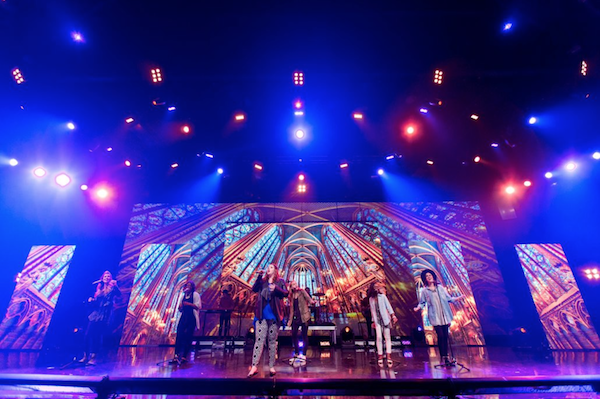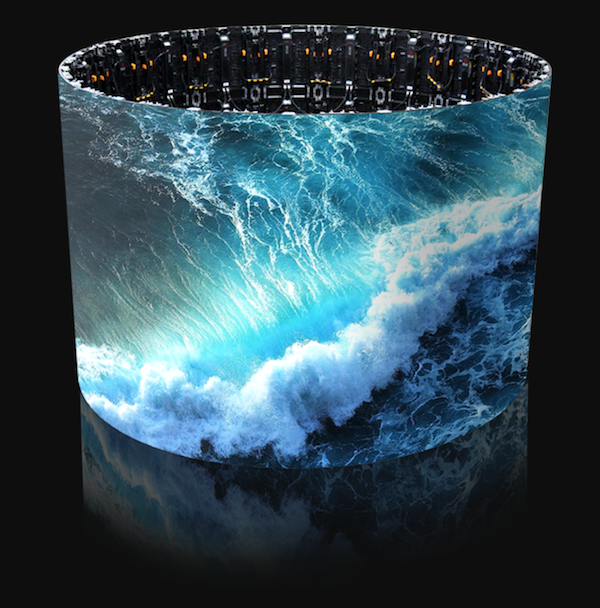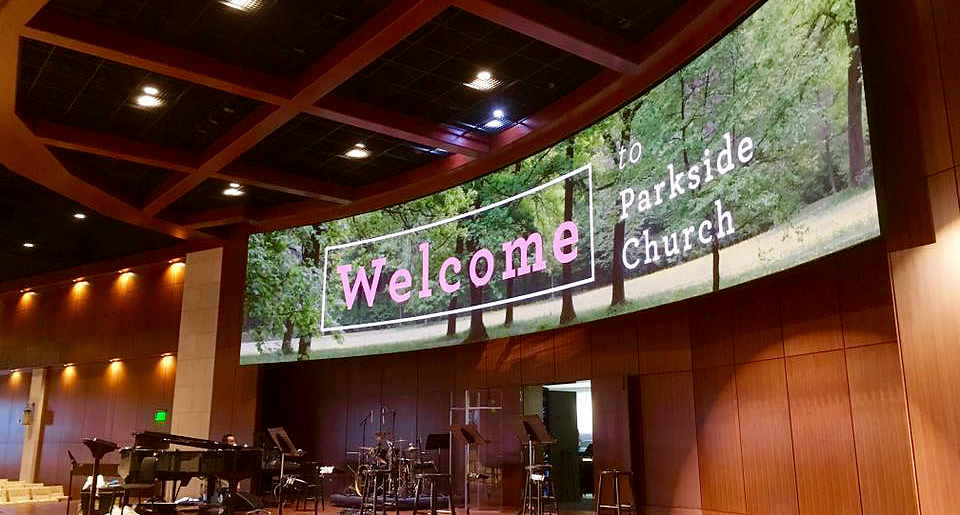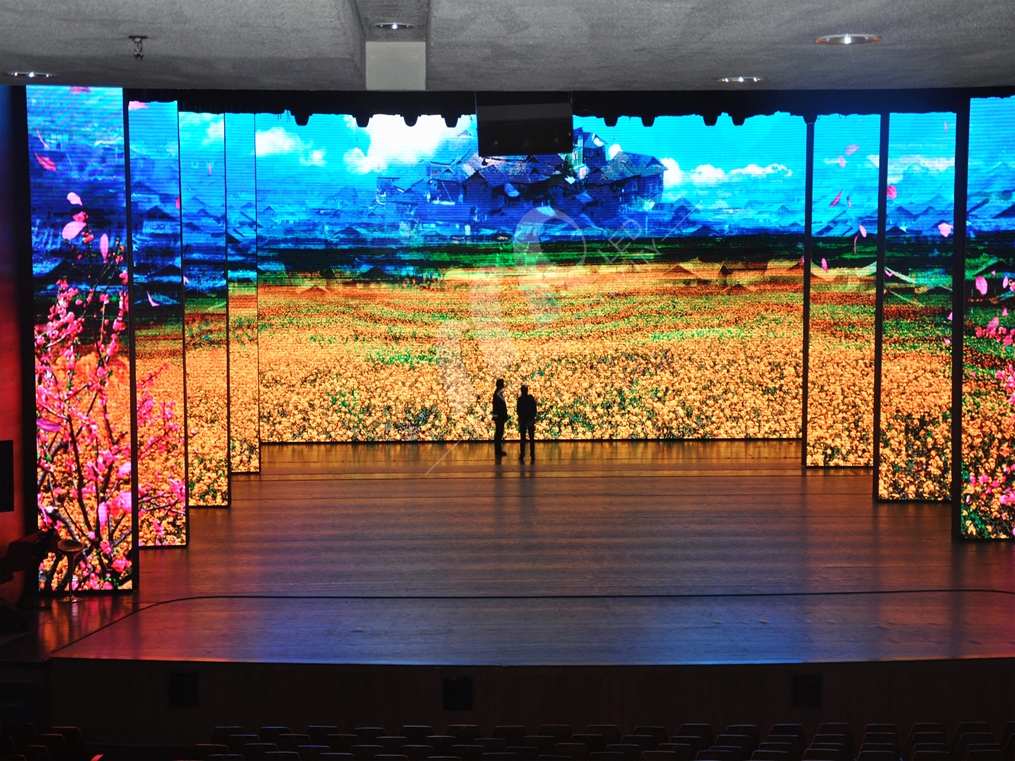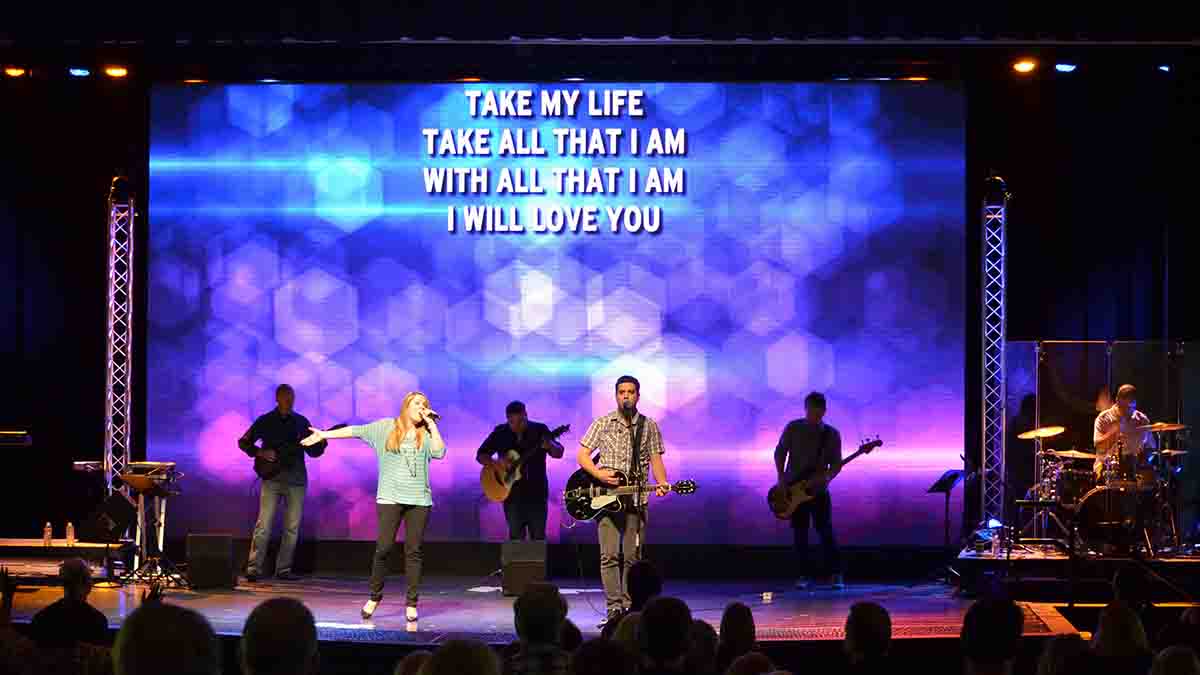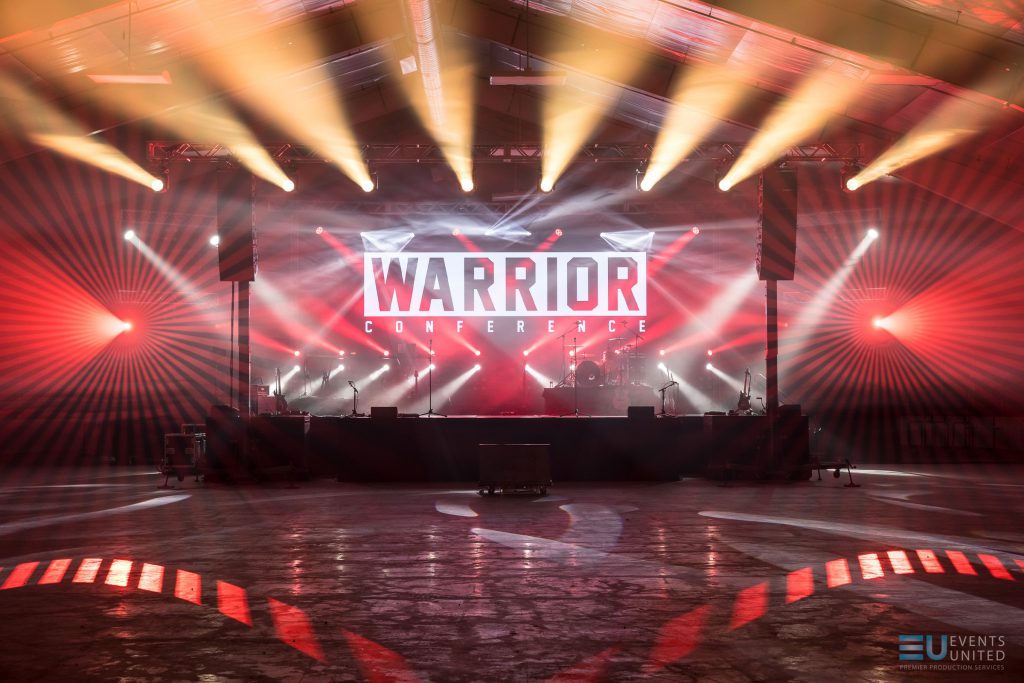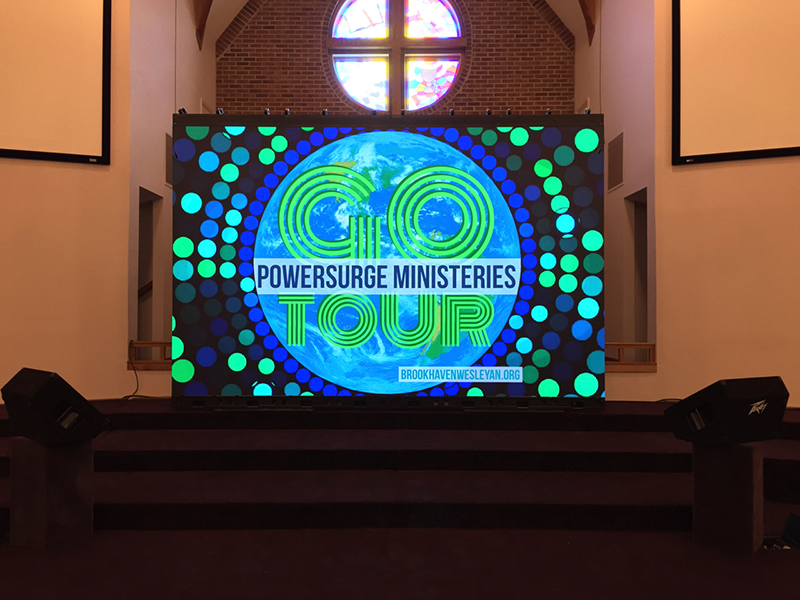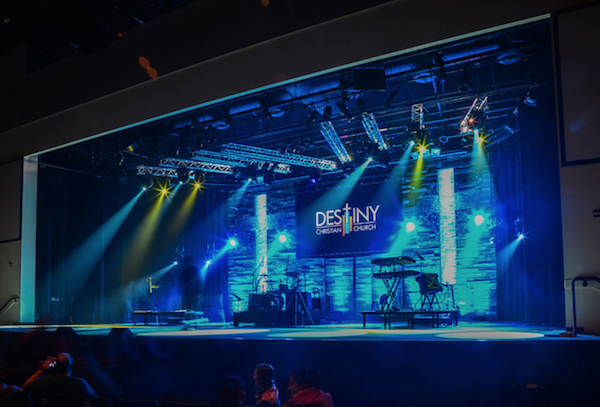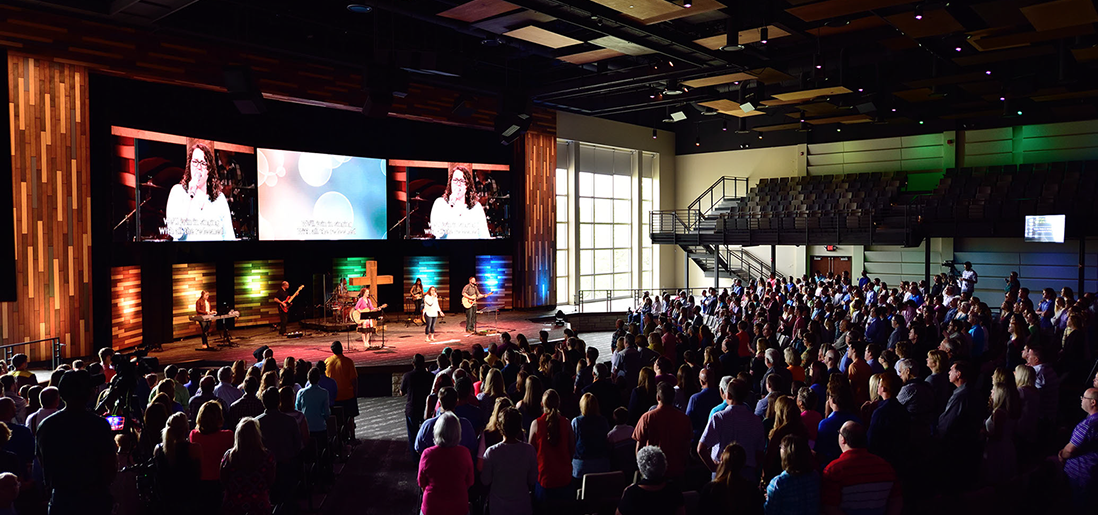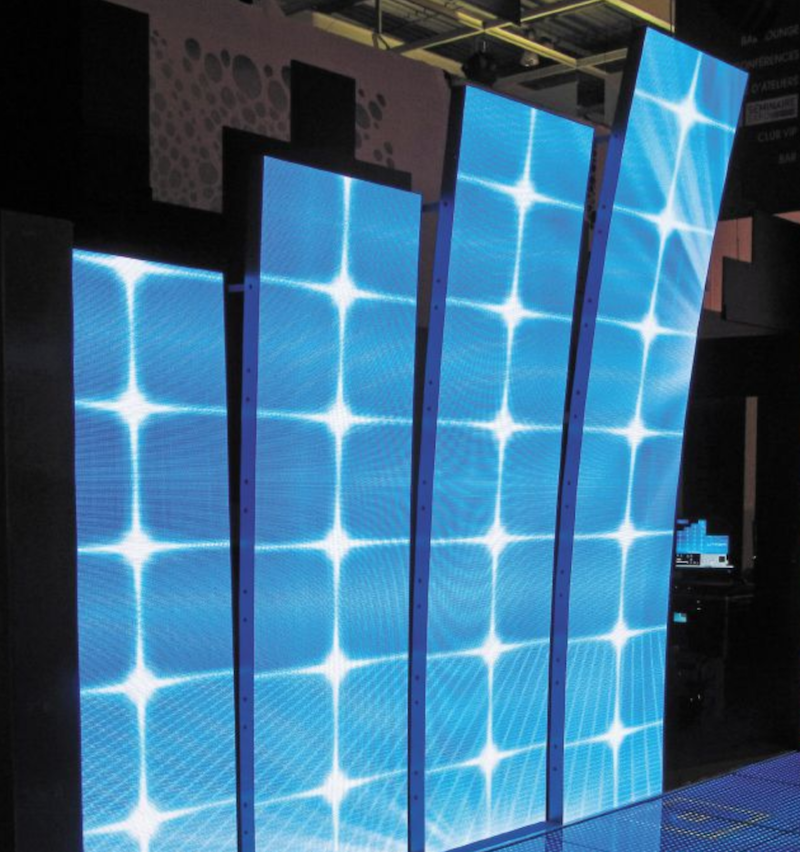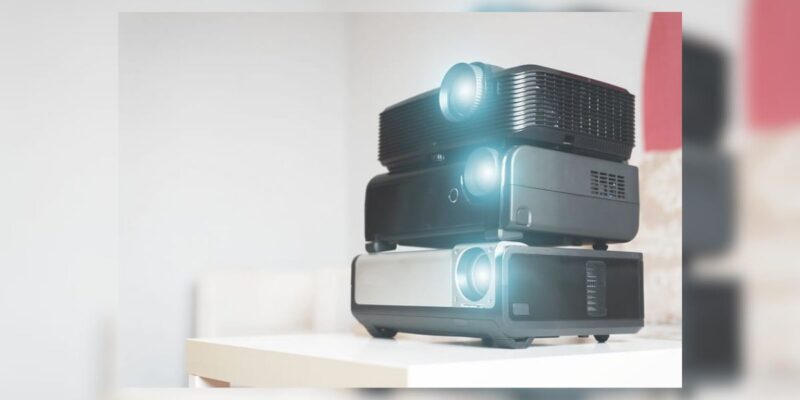The Wholesale Replacement of Projectors in Churches
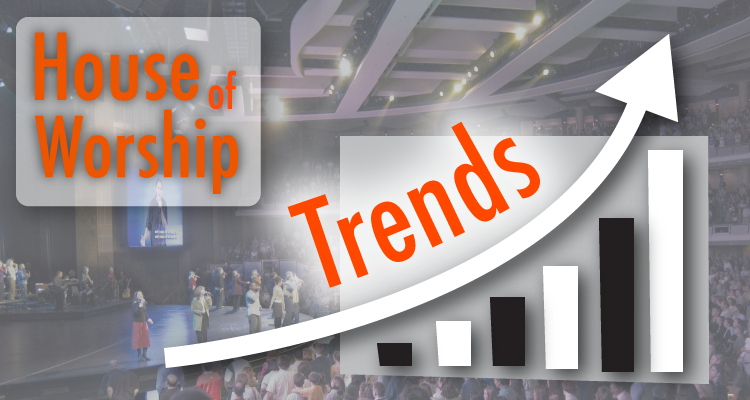 LED video technology will begin to surpass projection technology, spurring a wholesale replacement of projectors in the house of worship market when audiovisual (AV) manufacturers and integration firms realize the path of least resistance for churches is in modularity.
LED video technology will begin to surpass projection technology, spurring a wholesale replacement of projectors in the house of worship market when audiovisual (AV) manufacturers and integration firms realize the path of least resistance for churches is in modularity.
The end of video projection for large venue churches is now in sight. Indeed, the wholesale of replacement of projectors in churches is now a viable reality.
The Value Threshold for LED Video
The math alone for replacing projection with LED in churches is compelling. It is estimated well over 250,000+ churches in North America alone currently use video projection. Within that huge number is another estimated group: about 10,000 churches using projection in multiple venues on the same campus. And another key subset: Multi-site churches, which in 2012 numbered about 8,000, are now thought to be nearly double that for multi-site churches in the United States alone. Interestingly, those 15,000 churches have an average of three or more campuses per church.
For the audio vendors reading, a similar pattern started over a decade ago with line arrays replacing conventional speaker systems.
When technology advances to the point where the benefits outweigh the costs, customers will spend money for greater value. LED video technology has reached this threshold.
In the house of worship market, weekend services with a clearly articulated message are a key priority, a truth that applies to video as well as the spoken word.
While the stats are focused on North America, and the U.S. in particular, the images below show a significant percentage of churches worldwide where LED video technology is already in place. Some of these boast screens that dwarf the largest projection screens in U.S. churches precisely because projection could never attain the combination of resolution, brightness, and contrast achieved by LED video technology.
Wholesale Replacement of Projection
Projection technology is almost always a fixed, static installation with limited options for modifying the screen location, size, and required projection distances. However, because the cost-per-lumen (measured brightness) has steadily marched downward over the years, projection became the assumed standard for all but the smallest screen sizes where flat panel monitors are an option. With this assumption came the accepted limitations of projection and the resulting compromises made in church venues.
Projection technology has increased perceived brightness through a combination of technologies. From flat-out brighter lamps and bulbs to increased contrast ratio to the screen surface and screen viewing angles, manufacturers have done as much as they can to make projected images look bright and saturated in spite of ambient light from windows, stage lighting or even indirect bounce light sources. The physics demanded compromise in order to make the projected images ‘pop’ including stacking projectors, refocusing lighting instruments or even requiring black-box, windowless rooms (similar to movie theaters) to absolutely control or minimize any non-projected light sources.
The resulting trade-offs are evidenced in the wide variety of architectural decisions made by church architects and church leaders, yet all understood and recognized the limitations of projected images and simply accounted for the accepted compromises. With LED technology reaching fine pixel density (known as ‘pitch’ in LED parlance), increasing brightness, contrast and the additional color mixes of LED diodes, the viability of LED for indoor (and outdoor) applications means that the assumed compromises are now off of the table.
Since LED video technology is available in multiple configurations, shapes, sizes, and configurations, the possibilities for stage design are nearly unlimited. This freedom does come at a price, as increased resolution and a finer pitch is more expensive than projectors on a square foot or square meter cost.
However, with the significant advancements in LED video technology, including the brightness, contrast ratios, pixel density and pitch, modularity, sizes, shapes and placement options, the value proposition of LED video has already made this technology the standard in the rental, staging and touring markets. The house of worship market has already begun to rent and install LED video walls and LED video curtains to leverage these technology advantages for their theatrically-lit and/or broadcast video-lit stages.
The gallery of images below represents how LED video technology has already been incorporated into churches and other large stage venues. The possibilities are nearly endless and represent the dawn of a new era in church video.
- TritonVT
- Create LED
- TritonVT
- Vanguard LED Displays
- MR LED
- Blizzard
- Absen
- Chauvet
- Coleder
- Gloshine
- Absen
- Elation
- Vanguard LED Displays
- EKTA
Though not nearly an exhaustive list, I have included the following list of LED video technology manufacturers (alphabetically) as a sampling of the overall vendor space and to include links for my usage of the images above.
- Absen
- Aoto
- Barco
- Blizzard
- Chauvet
- Christie Digital
- Coleder
- CreateLED
- Daktronics
- Dicolor LED
- Elation
- Gloshine
- INFiLED
- LianTronics
- Macroblock
- Mega Systems
- MR LED
- Nanolumens
- Tritonvt
- Unilumin
- Vanguard LED
- Yes Tech
Crossing the Chasm to LED Video Adoption
To ‘cross the chasm’ between the early adopters and the early majority of churches replacing much of their large-venue projection with LED video technology, the AV industry as a whole needs to present the option to address both new video display opportunities and show the total cost of ownership differences on an amortized 15+ year schedule.
Manufacturers, consultants, and systems integrators all should be helping church buyers understand the usable lifespan of your technology so that they can amortize the initial cost out over the lifespan of that product, in not only years but also in the number of services it will likely handle before it’s time to upgrade it. LED video technology has a much longer expected lifespan than projection technology and has no expensive replacement lamps to add to the cost of ownership.
Vendors will be able to present a base installation of key LED video components which can be expanded with rental solutions for changing up the staging requirements over time. The actual investment cost has a value proposition for LED video technology that projection does not: modularity.
Considering the huge number of churches with multiple services (and even multiple venues and campuses), it’s not unreasonable for a church to have more than 250 services/special events in its venues per year. Those church stats at the beginning of this article represent somewhere in the neighborhood of 8 million services per year, based on the number of venues. The total cost of ownership should be easily calculable using the variables of the LED video screen cost, the number of services per year, the number of hours used per service and the number of venues using the technology.
For large-venue (1,000+ seats) church auditoriums and sanctuaries, LED video technology will surpass projection technology and usher in the wholesale replacement of static projectors with flexible, scalable LED video technology in the house of worship market. The question is, who will be first-to-church-market with a comprehensive, amortized solution?
What do you think? Do you agree with Anthony Coppedge’s thoughts about LED video for the house of worship market?



